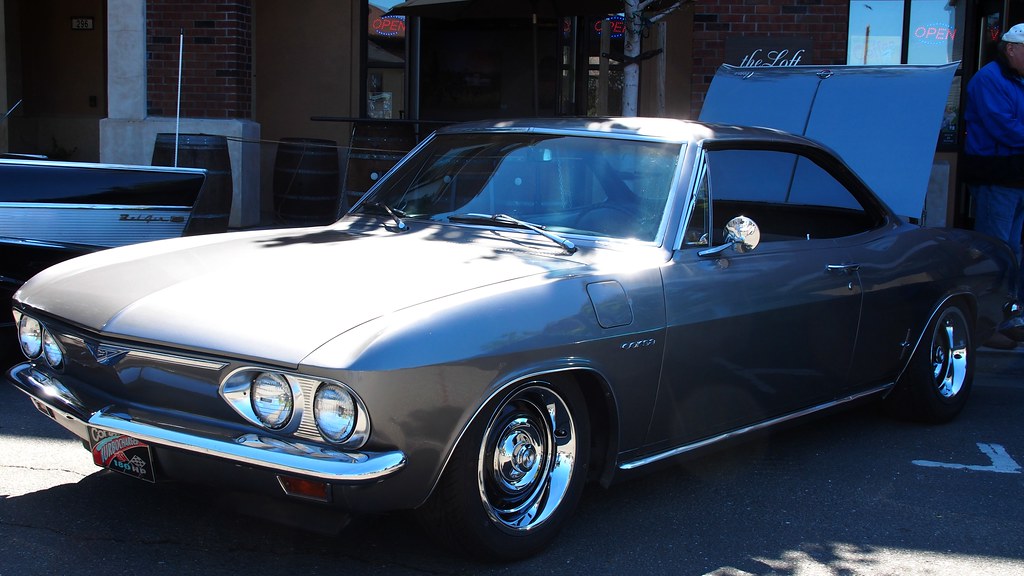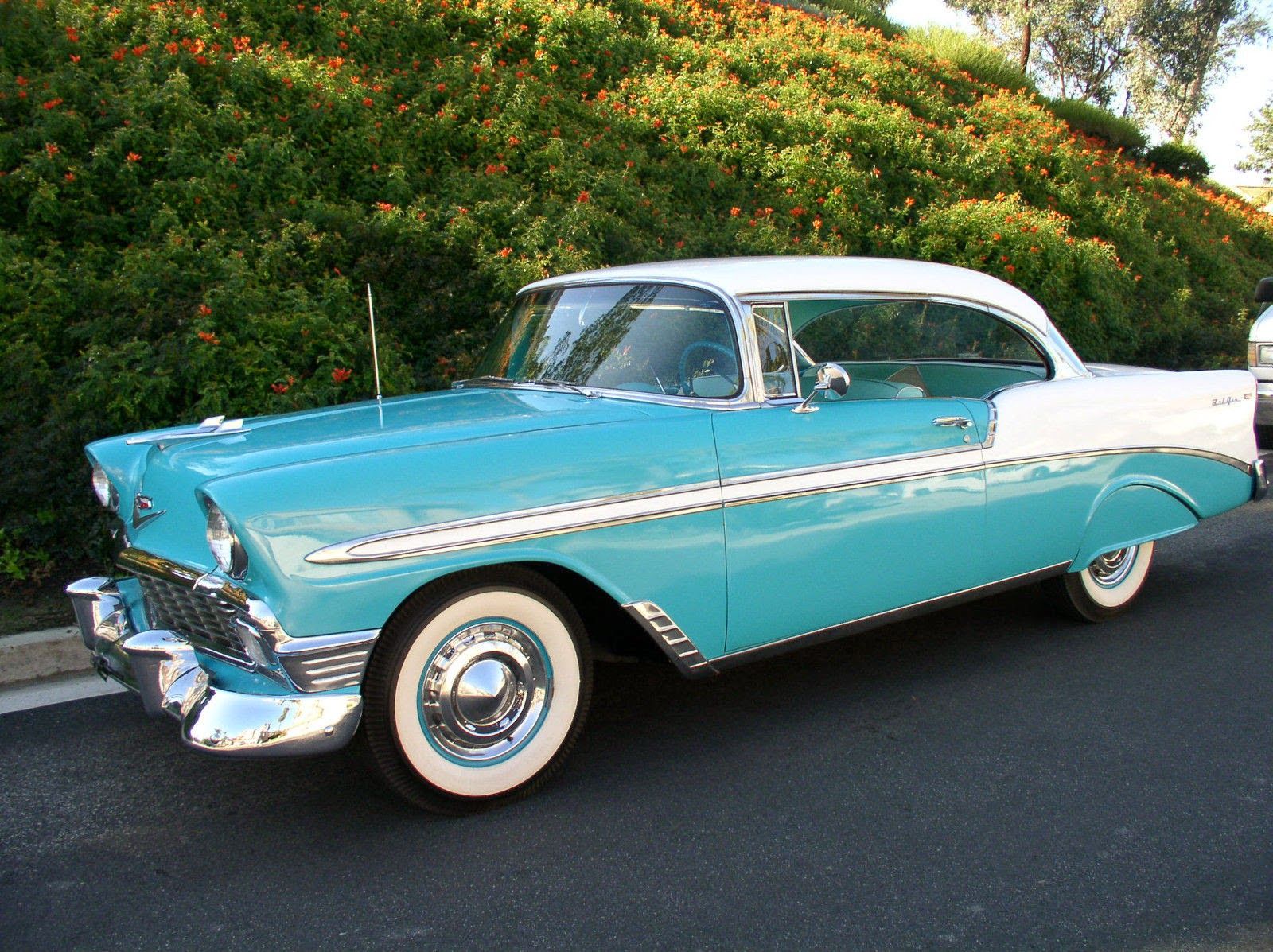
For many, retirement symbolizes a new chapter, a time to pursue long-held passions and perhaps even explore new avenues for financial growth. As baby boomers increasingly step away from the workforce, a fascinating trend is emerging: the rediscovery of classic cars, not merely as nostalgic relics, but as viable, engaging investments and immensely rewarding hobbies. This unique intersection of passion and fiscal foresight offers retirees an opportunity to diversify their portfolios while indulging in the romance of vintage automotive engineering.
Indeed, the classic car market is currently experiencing a significant shift. With many established collectors cashing in their prized possessions, a surge in supply is driving down prices for vehicles that, as Brook McGuire, strategy lead for specialty products at Safeco, notes, “have probably been a little overvalued.” This creates an opportune moment for retirees who have long dreamt of owning a vintage automobile, making the plunge now more appealing than ever. The notion that classic cars are once again becoming affordable opens the door for a wider audience to participate in this captivating world.
Navigating this market, however, requires more than just a keen eye for aesthetics. It demands a blend of financial acumen and informed decision-making. Thankfully, resources abound for retired buyers on a fixed income, as Justin Byrd, president of Team Velocity, points out, with many websites now allowing searches by payment. This functionality empowers buyers to “narrow their search down to vehicles that they know that they can afford,” preventing the common pitfall of being “attracted to something that you can’t really afford when it’s time to do the deal.” It underscores the practical advice necessary for making a smart acquisition, ensuring that the joy of ownership is not overshadowed by financial strain. What follows is an in-depth look at some of the most compelling investment-grade classic cars, offering retirees a blend of driving pleasure and promising financial returns.
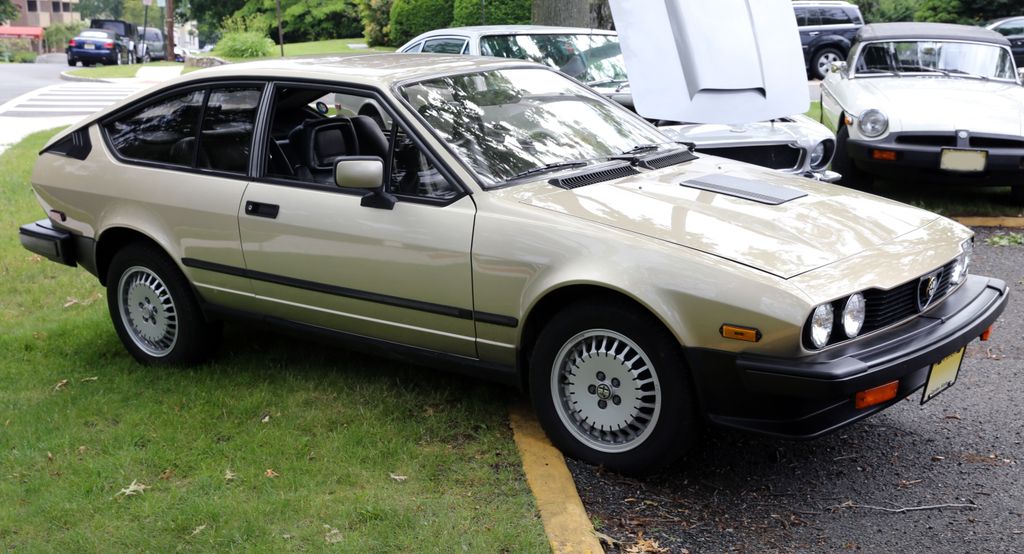
1. **Alfa Romeo GTV6**For those with a penchant for Italian style and spirited performance, the Alfa Romeo GTV6 presents a compelling proposition. This distinctive 1980s coupe, built on the race-inspired 116 type chassis, boasts a bold design that unequivocally captures the aesthetic of its era. Its performance credentials, rooted in its motorsport heritage, further cement its appeal among a dedicated base of collectors and driving enthusiasts. The GTV6 truly embodies the passionate engineering for which Alfa Romeo is renowned, offering a visceral driving experience that transcends its age.
Despite a production run that exceeded 20,000 units, which might suggest a more common vehicle, the GTV6 has experienced a consistent and encouraging rise in value in recent years. This upward trend shows no signs of slowing down, especially as interest in classic Alfa Romeos across various models continues to gain momentum and spike in value. The GTV6 is not just a car to be admired; it’s a tangible asset that has proven its capacity for appreciation.
Its desirable years, specifically from 1981 to 1986, feature a robust 2.5L V6 engine that contributes significantly to its engaging character. The combination of classic Italian design, a distinctive engine note, and a growing collector base makes the GTV6 a smart choice for retirees looking for a classic that offers both an emotional connection and a solid investment. It’s a vehicle that invites you to drive it, to experience its unique personality, and to be part of a vibrant community of enthusiasts who appreciate its legacy.
Car Model Information: 2025 Genesis GV80 3.5T
Name: Alfa Romeo Alfetta
Caption: 1978 Alfa Romeo Alfetta GTV 2.0
Manufacturer: Alfa Romeo
Production: 1972–1987
Assembly: Arese,Rosslyn, Gauteng
BodyStyle: Sedan (automobile)
Layout: Front-engine, rear-wheel-drive layout
Related: Alfa Romeo Giulietta (116),Alfa Romeo Alfa 6,Alfa Romeo 90
Categories: 1980s cars, Alfa Romeo vehicles, Articles with short description, CS1 Dutch-language sources (nl), CS1 French-language sources (fr)
Summary: The Alfa Romeo Alfetta (Type 116) is a front-engine, five-passenger saloon and fastback coupé manufactured and marketed by Italian automaker Alfa Romeo from 1972 to 1987 with a total of over 400,000 units produced during its production run.
The Alfetta was noted for the rear position of its transaxle (clutch and transmission) and its De Dion tube rear suspension — an arrangement designed to optimize handling by balancing front/rear weight distribution, as well as maintaining a low polar moment of inertia and low center of gravity. The interior of Coupé models featured a then unusual central tachometer placement — by itself, directly in front of the driver.
The Alfetta name, which means “little Alfa” in Italian is derived from the nickname of the Alfa Romeo Alfetta (Tipo 159), a successful Formula One car which in its last iteration introduced in 1951, paired a transaxle layout to De Dion tube rear suspension — like its modern namesake.
Get more information about: Alfa Romeo Alfetta
Buying a high-performing used car >>>
Brand: Alfa Romeo Model: GTV6
Price: $63,683 Mileage: 5,413 mi.
Read more about: The Road to Ruin: 15 Foreign Fails That America Just Couldn’t (or Wouldn’t) Understand
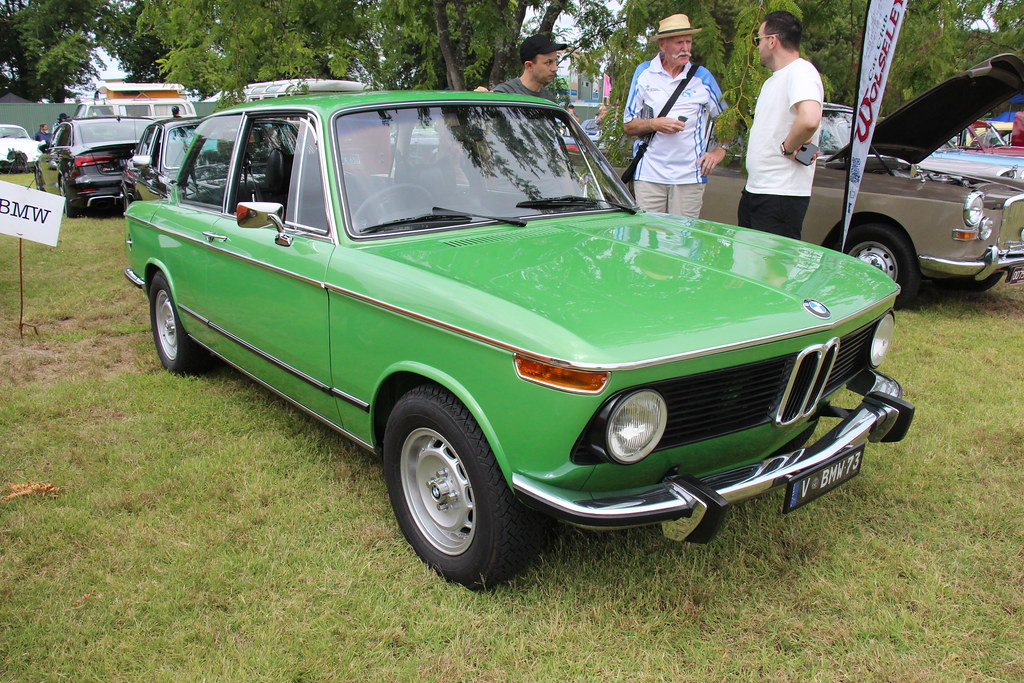
2. **BMW 2002**The BMW 2002, once widely regarded as an affordable entry point into classic vintage motoring, has transformed into a highly sought-after icon in the collector car world. Its nimble handling and engaging driving dynamics have endeared it to generations of enthusiasts. Clean examples of this revered model now regularly command prices ranging anywhere from $20,000 to $50,000, illustrating its remarkable ascent in value over the last decade.
Taking its name from its potent 2.0-liter engine and two-door configuration, the BMW 2002 is desirable across all of its available trims and production years. However, certain variants stand out for their enhanced rarity and, consequently, greater value. The elusive Targa, the unique 2000tii Touring, and the high-performance Turbo models are particularly coveted by collectors. These special editions represent the pinnacle of the 2002’s engineering and design, offering a blend of exclusivity and driving pleasure that is increasingly rare.
Furthermore, earlier examples built before 1974 are considered more sought-after due to their distinctive round taillight setup, a stylistic detail that marks a specific period in BMW’s design evolution. The desirable years for investment-grade 2002s typically fall between 1968 and 1973, making these early models particularly attractive for those looking to acquire a piece of automotive history with strong investment potential. It’s a testament to German engineering and timeless design that continues to capture hearts and appreciate in value.
Car Model Information: 1971 BMW 2002
Name: BMW 02 Series
Caption: BMW 1600-2
Production: 1966–1977,837,038 units
Assembly: Munich
Class: Compact executive car
BodyStyle: 2-door coupé , 2-door convertible , 3-door hatchback
Layout: Front-engine, rear-wheel-drive layout
Engine: ubl
Wheelbase: cvt
Length: cvt
Width: cvt
Height: cvt
Weight: cvt
Transmission: 4-speed manual , 5-speed manual ,3-speed automatic
Successor: BMW 3 Series (E21)
Designer: Giovanni Michelotti
Manufacturer: BMW
Categories: 1970s cars, Articles with short description, BMW vehicles, CS1 German-language sources (de), CS1 Italian-language sources (it)
Summary: The BMW 02 Series is a range of sporty compact executive cars produced by German automaker BMW between 1966 and 1977, based on a shortened version of the New Class Sedans.
The first 02 Series produced was the 1600-2 (later renamed 1602) in 1966. In 1975, the 02 Series was replaced by the E21 3 Series (except for the 1502 model, which continued until 1977).
Get more information about: BMW 02 Series
Buying a high-performing used car >>>
Brand: BMW Model: 2002
Price: $45,550 Mileage: 5,001 mi.
Read more about: Buyer Beware: 14 Cars Notorious for Breaking Down Prematurely, Especially After 100,000 Miles

3. **Datsun 240/260/280Z**Datsun’s iconic Z lineup, encompassing the 240Z, 260Z, and 280Z, stands as a testament to Japanese automotive excellence and remains a firm favorite among vintage sports car enthusiasts. These models have often been affectionately referred to as a “poor man’s Porsche 911,” a comparison that speaks volumes about their exhilarating performance and classic, appealing styling. They offer a driving experience that is both engaging and rewarding, embodying the essence of a true driver’s car without the stratospheric price tag of some European counterparts.
Remarkably, despite being available for a bargain only a decade or two ago, these Z-series cars have seen a steady and significant increase in value over recent years. This appreciation is a clear indicator of their growing recognition in the classic car market as legitimate investment pieces. Their blend of reliability, performance, and distinctive aesthetics makes them increasingly attractive to collectors who understand their enduring appeal and historical significance.
Even examples that have been modified for racing purposes, or “race build Zs,” tend to hold their value quite well, which is an unusual characteristic in the classic car world where originality often dictates worth. This flexibility in retaining value, even with modifications, further underscores the robust demand for these Japanese legends. The desirable years for these models span from 1969 to 1978, all powered by a 2.4L Straight-Six engine, offering retirees a fantastic opportunity to invest in a piece of JDM history that continues to climb in worth.
Read more about: Unearthing Automotive Gold: A Forbes Guide to Classic Cars Becoming Savvy Investments

4. **International Harvester Scout (& Scout II)**While the original Ford Bronco has become largely unobtainable for most automotive enthusiasts due to its skyrocketing value, the International Harvester Scout and its successor, the Scout II, present a fantastic alternative. These vintage 4×4 models offer a robust and charming entry point into classic off-road ownership, combining rugged utility with a distinct historical appeal. They embody an era of straightforward, go-anywhere capability that resonates deeply with many.
Prices for these durable off-roaders can range from as little as $10,000 to $15,000 for more basic models, extending upwards of $80,000 for pristine, well-preserved, and original examples. This wide price spectrum means that depending on budget and ambition, there’s a Scout or Scout II out there for various levels of investment. Their relative accessibility, especially compared to their surging counterparts, makes them an attractive option for retirees looking for a classic vehicle that truly stands out.
Beyond their inherent value, both the Scout and Scout II are considered amazing candidates for “restomod” off-road builds. This trend involves restoring a classic vehicle while integrating modern components for enhanced performance, comfort, and reliability. Such projects appeal greatly to off-road enthusiasts and can significantly increase a vehicle’s value, making them not only a hobby but a potentially profitable endeavor. With desirable years spanning from 1961 to 1980 and a range of engine options from 2.5L i4 to 5.0L V8, the International Harvester Scout offers a unique blend of heritage and practical investment.
Car Model Information: 2025 Genesis GV80 3.5T
Name: International Scout
Caption: 1978 Scout II wagon
Manufacturer: International Harvester
Production: 1961–1980
Class: Full-size,SUV
Assembly: Fort Wayne, Indiana
BodyStyle: SUV
Layout: Front-engine, rear-wheel-drive layout,rear-wheel drive
Categories: 1970s cars, 1980s cars, All-wheel-drive vehicles, All articles needing additional references, All articles with dead external links
Summary: The International Scout is an off-road vehicle produced by International Harvester from 1960 to 1980. Created as a competitor for the Jeep CJ, the Scout was the precursor of more sophisticated SUVs, including the Ford Bronco, Chevrolet Blazer, and the later Jeep Cherokee.
Produced for two generations, the Scout was designed as an open-top two-door truck as a base vehicle with options to configure it as a station wagon, half-cab pickup truck, or a soft-top convertible.
International Harvester assembled the model line in its facility in Fort Wayne, Indiana.
Get more information about: International Scout
Buying a high-performing used car >>>
Brand: International Harvester Model: Scout
Price: $63,683 Mileage: 5,413 mi.
Read more about: Unearthing Automotive Gold: A Forbes Guide to Classic Cars Becoming Savvy Investments
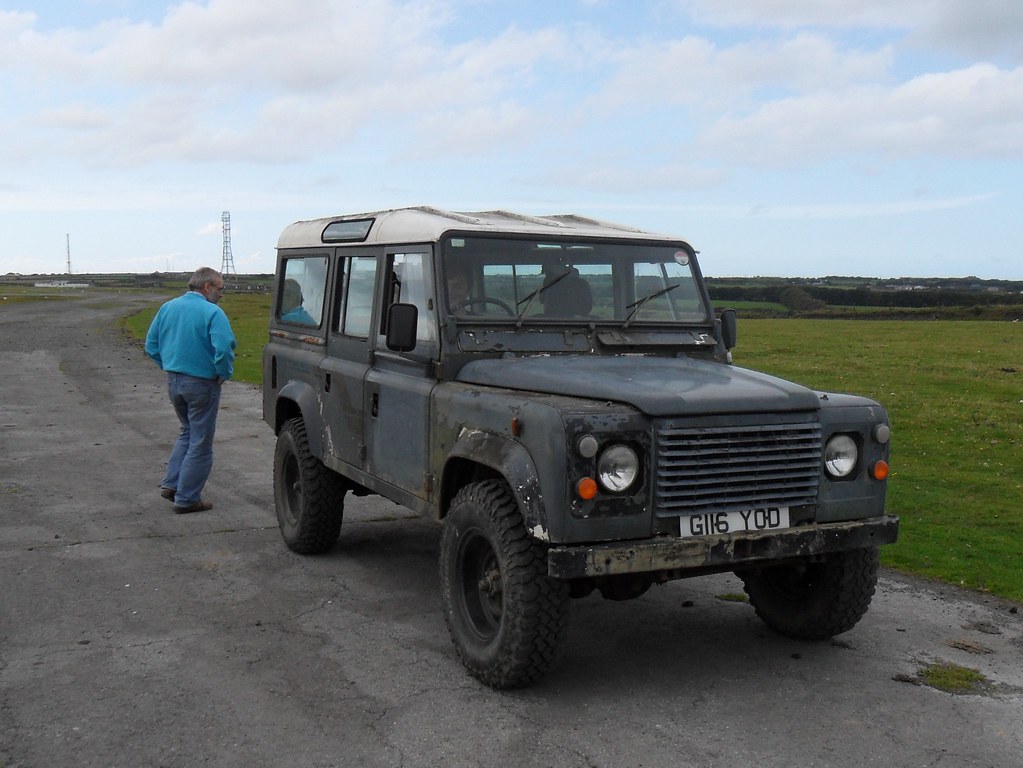
5. **Land Rover Defender**The Land Rover Defender, an icon of rugged capability and timeless design, holds a unique position in the classic car market. Although it already commands a premium price as a classic vehicle, its value continues to steadily rise year after year, solidifying its status as a fantastic investment vehicle. The enduring appeal of the Defender lies in its unparalleled heritage as an explorer and its distinctive, utilitarian aesthetic that has captivated adventurers and collectors alike for decades.
For those with an initial budget, there are often “basket-case examples” available on the cheaper side. While these might require significant restoration, the existence of expert restoration outfits specializing in vintage Defenders provides a clear path to transforming a neglected specimen into a prized collectible. This dynamic creates an avenue where substantial returns can be made, provided the buyer has the foresight and resources to cover the overhead of a comprehensive restoration. It’s an investment that can be as much about the process as it is about the final product.
The desirable years for the Land Rover Defender, specifically from 1983 to 1997, cover a period where its iconic status was firmly established. These models offered a range of robust engine options, including 2.5L Petrol, Diesel, or Turbodiesel i4, and a 3.5L V8, catering to various preferences for power and efficiency. Investing in a retro Defender is more than just acquiring a vehicle; it’s buying into a legacy of exploration and an asset with a proven track record of appreciation, perfect for those who appreciate both adventure and sound financial planning.
Car Model Information: 2025 Genesis GV80 3.5T
Caption: 2015 Land Rover Defender 90 (Australia)
Name: Land Rover Defender
Manufacturer: ubl
Class: Small offroader
Aka: Land Rover 90, Ninety, 110, One Ten, One Two Seven (1983–1990)
Production: ubl
Predecessor: Land Rover Series III
Successor: Land Rover Defender (L663)
Assembly: Shah Alam,Kulim
Layout: Front-engine, four-wheel-drive layout,four-wheel drive
Categories: 1990s cars, 2000s cars, 2010s cars, All-wheel-drive vehicles, All Wikipedia articles written in British English
Summary: The Land Rover Defender (introduced as the Land Rover One Ten, joined in 1984 by the Land Rover Ninety, plus the extra-length Land Rover One Two Seven in 1985) is a series of British off-road cars and pickup trucks. They have four-wheel drive, and were developed in the 1980s from the Land Rover series which was launched at the Amsterdam Motor Show in April 1948. Following the 1989 introduction of the Land Rover Discovery, the term ‘Land Rover’ became the name of a broader marque, no longer the name of a specific model; thus in 1990 Land Rover renamed them as Defender 90 and Defender 110 and Defender 130 respectively.
The vehicle, a British equivalent of the Second World War derived (Willys) Jeep, gained a worldwide reputation for ruggedness and versatility. With a steel ladder chassis and an aluminium alloy bodywork, the Land Rover originally used detuned versions of Rover engines.
Though the Defender was not a new generation design, it incorporated significant changes compared to the Land Rover series, such as adopting coil springs front and rear. Coil springs offered both better ride quality and improved axle articulation. The addition of a centre differential to the transfer case gave the Defender permanent four-wheel-drive capability. Both changes were derived from the original Range Rover, and the interiors were also modernised. Whilst the engines were carried over from the Series III, a new series of modern and more powerful engines was progressively introduced.
Even when ignoring the series Land Rovers and perhaps ongoing licence products, the 90/110 and Defender models’ 33-year production run were ranked as the sixteenth longest single-generation car in history in 2020.
In 2020, Jaguar Land Rover introduced an all new generation of Land Rover Defender Land Rover Defender (L663) switching from body on chassis to integrated bodywork and from live, rigid axles to all around independent suspension.
Get more information about: Land Rover Defender
Buying a high-performing used car >>>
Brand: Land Rover Model: Defender
Price: $63,683 Mileage: 5,413 mi.
Read more about: Owen Cooper Makes Emmy History: “Adolescence” Star Becomes Youngest Male Acting Winner at 77th Primetime Emmys
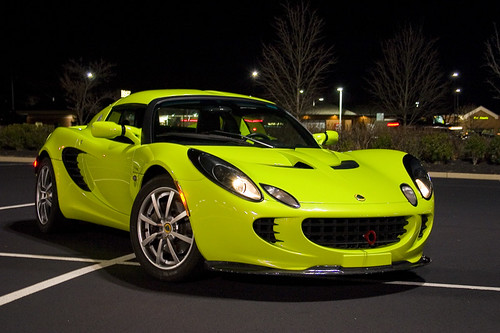
6. **Lotus Elise**Few production cars in history embody an “unrelenting focus on minimizing weight” quite like the Lotus Elise. This dedication to lightweight engineering has resulted in one of the best-performing and best-handling sports cars of all time, a testament to Lotus’s philosophy of “Simplify, then add lightness.” The Elise delivers an incredibly pure and direct driving experience, connecting the driver intimately with the road in a way few other vehicles can achieve. Its minimalist design and exceptional agility make it a true enthusiast’s machine.
This singular focus on performance and driver engagement has made the Lotus Elise incredibly popular amongst automotive enthusiasts who actively seek a genuine “true driver’s car.” Its reputation for providing an unadulterated sports car experience has created a strong and sustained demand in the market. Consequently, this enduring popularity has transformed the ultra-lightweight coupe into a formidable candidate as an investment vehicle, showing consistent appreciation as more collectors recognize its iconic status and driving purity.
The desirable years for the Lotus Elise span from 1996 to 2011, primarily featuring a 1.8L Inline-Four engine. These models represent the core of the Elise’s design philosophy and offer a blend of exhilarating performance and relative accessibility in the classic sports car market. For retirees who prioritize driving pleasure and appreciate ingenious engineering, the Lotus Elise offers not only a thrill behind the wheel but also a sound investment that promises to hold, and likely increase, its value over time.
Car Model Information: 2005 Lotus Elise Supercharged
Caption: Lotus Elise S Club Racer (Series 3)
Name: Lotus Elise
Manufacturer: Lotus Cars
Production: 1996–2021,35,124 produced
Assembly: Hethel,Norfolk,England
Predecessor: Lotus Elan#Elan M100
Successor: Lotus Emira,Lotus Theory 1
Class: Sports car
BodyStyle: Targa top,Roadster (automobile)
Layout: Rear mid-engine, rear-wheel-drive layout
Platform: Lotus small car platform
Sp: uk
Categories: 2000s cars, 2010s cars, All Wikipedia articles written in British English, All articles with dead external links, All articles with unsourced statements
Summary: The Lotus Elise is a sports car conceived in early 1994 and released in September 1996 by the British manufacturer Lotus Cars. A two-seater roadster with a rear mid-engine, rear-wheel-drive layout, the Elise has a fibreglass body shell atop its bonded extruded aluminium chassis that provides a rigid platform for the suspension, while keeping weight and production costs to a minimum. The Elise was named after Elisa Artioli, the granddaughter of Romano Artioli who was chairman of Lotus and Bugatti at the time of the car’s launch.
Production of the Elise, Exige and Evora ended in 2021. It was replaced by the Lotus Emira.
Get more information about: Lotus Elise
Buying a high-performing used car >>>
Brand: Lotus Model: Elise
Price: $69,900 Mileage: 25,000 mi.
Read more about: Rev Up for 2025: 12 Sports Cars That Will Electrify Your Driving Experience and Set the Roads Ablaze
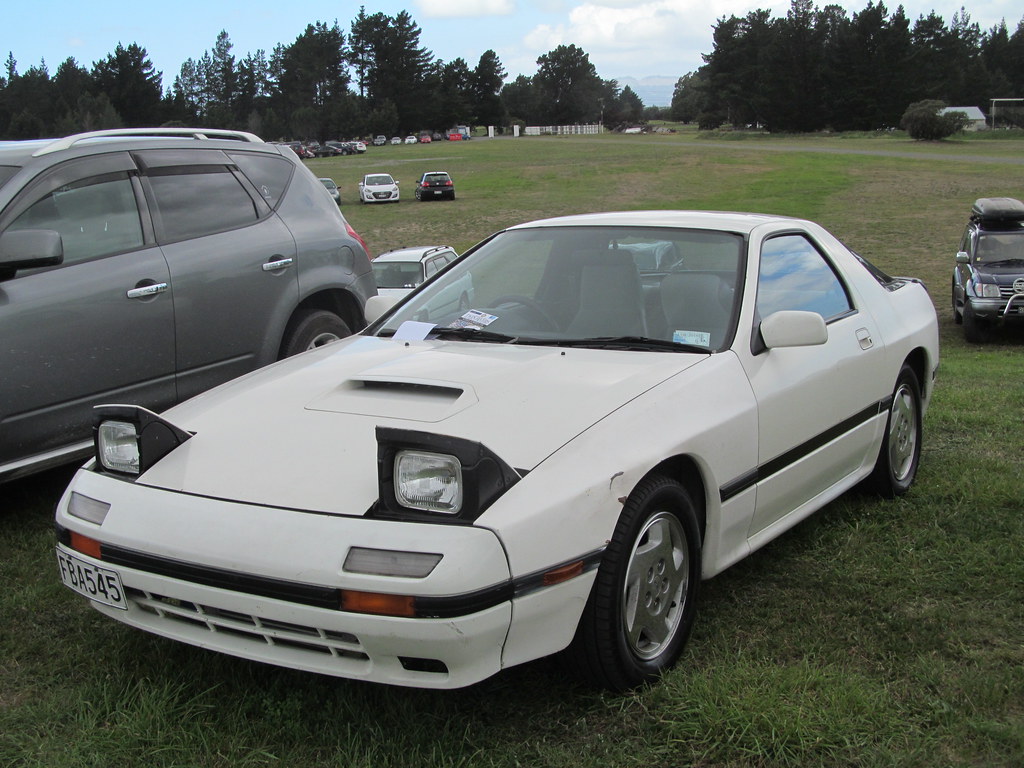
7. **Mazda RX-7**The landscape of JDM (Japanese Domestic Market) cars has witnessed a sharp and significant rise in popularity in recent years, with the Mazda RX-7 standing out as a prime example of this burgeoning trend. Clean examples of this sleek, Japanese-designed sports car now routinely fetch prices nearing $50,000, and critically, their values are continuing to climb. This consistent appreciation underscores the RX-7’s strong position as a modern-day classic and a smart investment for the discerning collector.
What truly sets the Mazda RX-7 apart, giving it a unique character and allure, is its distinctive Wankel rotary engine. This unconventional power plant delivers a smooth, high-revving performance unlike traditional piston engines, providing an exhilarating driving experience. This unique engineering, combined with its aerodynamic and distinctive styling, has solidified its status in automotive history. It’s a car that not only looks fast but feels incredibly agile and responsive on the road.
The desirable years for the Mazda RX-7, typically spanning from 1985 to 1997, encompass the most iconic iterations of this model. During this period, engine options included the 1.1L, a turbocharged 1.1L, and a 1.3L Wankel Rotary, each offering a different flavor of the RX-7’s unique performance. For retirees looking to merge a passion for distinctive engineering with the potential for financial growth, the Mazda RX-7 offers an exciting and tangible asset that continues to capture the imagination of enthusiasts worldwide. It’s a blend of exotic appeal and reliable Japanese craftsmanship, making it a truly rewarding classic to own and invest in.
Continuing our exploration into automotive assets that combine passion with robust financial potential, we now turn our attention to eight more iconic classic cars perfectly suited for retirees seeking both a fulfilling hobby and a sound investment. These vehicles, much like those previously discussed, offer a unique blend of historical significance, driving pleasure, and promising appreciation in value, ensuring that your golden years are enriched by both tangible returns and the thrill of the open road.
Car Model Information: 1986 Mazda RX-7 GXL 2D Coupe
Name: Mazda RX-7
Caption: 1994 Mazda RX-7 R2 (FD3S)
Manufacturer: Mazda
Aka: Mazda Savanna RX-7 (Japan, 1978–1991),Mazda ɛ̃fini RX-7 (Japan, 1991–1997)
Class: Sports car
Production: 1978–2002,811,634 produced
Assembly: Hiroshima
Platform: Mazda F platform
Layout: Front-engine, rear-wheel-drive layout#Front mid-engine, rear-wheel-drive layout
Predecessor: Mazda RX-3
Successor: Mazda RX-8
Categories: 1980s cars, 1990s cars, 2000s cars, 24 Hours of Le Mans race cars, All articles needing additional references
Summary: The Mazda RX-7 is a front mid engine, rear-wheel-drive, rotary engine-powered sports car, manufactured and marketed by Mazda from 1978 through 2002 across three generations, all of which incorporated the use of a compact, lightweight Wankel rotary engine.
The first-generation RX-7, codenamed SA (early) and FB (late), is a two-seater two-door hatchback coupé. It featured a 12A carbureted rotary engine as well as the option for a 13B rotary engine with electronic fuel injection in later years. The second-generation RX-7, carrying the internal model code FC, was offered as a two-seater coupé with a 2+2 option available in some markets, as well as in a convertible body style. This was powered by the 13B rotary engine, offered in naturally aspirated or turbocharged forms. The third-generation RX-7, model code FD, was offered as a two-seater coupé with a 2+2 version offered as an option for the Japanese market. It featured a sequentially turbocharged 13B REW engine.
More than 800,000 RX-7s were manufactured over its lifetime.
Get more information about: Mazda RX-7
Buying a high-performing used car >>>
Brand: Mazda Model: RX-7
Price: $13,991 Mileage: 52,352 mi.
Read more about: High-Performance Thrills, Sensible Spends: 15 Cars That Rival the Porsche 911 Without the Hefty Price Tag
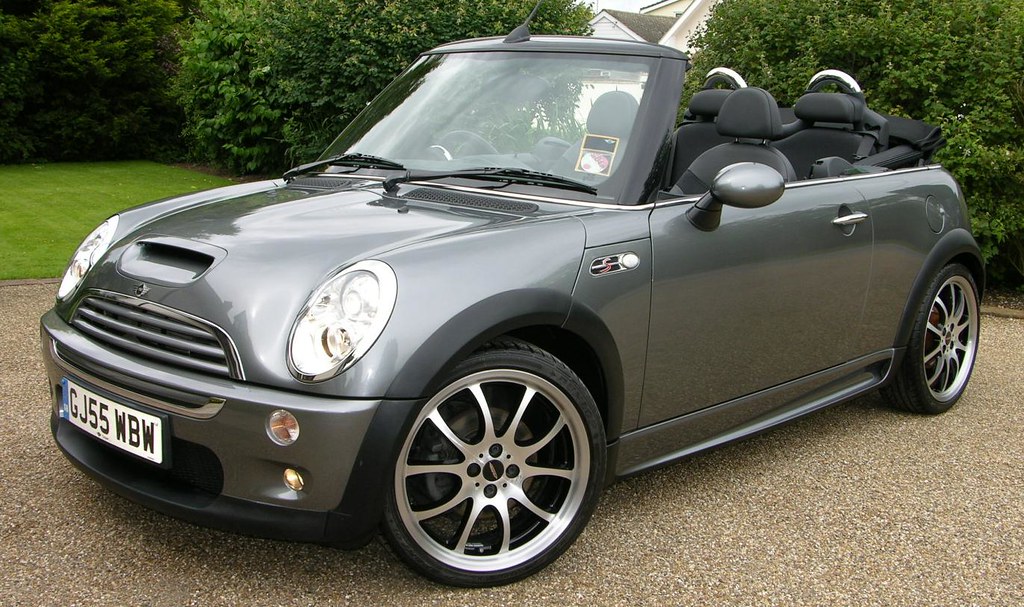
8. **Mini Cooper**A bonafide icon of 1960s British popular culture, the original Mini Cooper transcends its status as mere transportation; it’s a symbol of an era. Produced for several decades by a variety of different manufacturers, including the British Motor Corporation, British Leyland, and the Rover Group in the UK, its enduring appeal has woven it deeply into the fabric of automotive history. This diminutive vehicle, with its distinctive charm and agile handling, continues to capture the hearts of enthusiasts worldwide.
The resurgence in popularity of the Mini Cooper has been notably spurred on by today’s revived Mini models. This renewed interest has translated into a significant influx of demand for its classic predecessors, leading to a steady growth in the value of clean, well-maintained used specimens. For retirees, this trend presents a compelling investment opportunity, allowing them to own a piece of automotive history that is both enjoyable and financially rewarding.
Investing in a classic Mini Cooper offers more than just potential financial gains; it provides a connection to a vibrant community and a timeless driving experience. Its compact size makes it surprisingly practical for various uses, while its cheerful demeanor ensures every drive is an occasion. It’s an accessible entry point into the world of classic car ownership, appealing to those who appreciate ingenuity in design and a car with undeniable character.
The desirable years for the Mini Cooper span an extensive period, from 1959 all the way to 2000. These models were offered with a range of inline-four engine options, including 848cc, 970cc, 997cc, 998cc, 1,071cc, 1,098cc, and 1,275cc variants, each contributing to its spirited performance. Such a broad production window allows for various entry points into the market, catering to different budgets and preferences for rarity or specific features.
Car Model Information: 2013 MINI Coupe Cooper S
Sp: uk
Caption: 1959 Morris Mini-Minor (first one built)
Name: Mini
Aka: Austin 850,Rover Mini,Austin Cooper,Austin Mini,Austin Partner,Austin Seven,Innocenti Mini,Leyland Mini,Morris 850,Morris Mascot,Morris Mini Minor,Riley Elf,Wolseley 1000 (South Africa),Wolseley Hornet
Layout: Front-engine, front-wheel-drive layout
Manufacturer: British Motor Corporation,British Leyland,Rover Group
Production: 1959–2000 (5.38 million)
Class: City car
BodyStyle: sedan (car),convertible,Station wagon,sedan delivery,coupe utility
Engine: BMC A-series engine,Straight-four engine
Designer: Alec Issigonis,John Sheppard (car designer)
Transmission: 4-speed manual,AP automatic transmission,5-speed manual (optional extra on some later models)
Length: cvt,cvt,cvt
Width: cvt
Height: cvt
Weight: cvt
Wheelbase: cvt,cvt
Related: Mini Moke,Austin Metro,Innocenti Mini,Mini Wildgoose,Mini Marcos
Successor: Austin Metro,Mini Hatch
Assembly: Panmure, New Zealand
Categories: 1960s cars, 1970s cars, 1980s cars, 1990s cars, 2000s cars
Summary: The Mini is a very small two-door, four-seat car, produced for four decades over a single generation, with many names and variants, by the British Motor Corporation (BMC) and its successors British Leyland and the Rover Group, and finally (briefly) under BMW ownership. Minis were built as fastbacks, estates, convertibles, and various other body styles. Minus a brief 1990s hiatus, from 1959 into 2000, an estimated 5.38 million of all variations combined were built, and the Mini’s engines also powered another 2 million Mini Metros, though the Mini eventually outlasted its successor.
Initially, the Mini was marketed under the Austin and Morris names, as the Austin Seven and Morris Mini-Minor; the Austin Seven was renamed Austin Mini in 1962 and Mini became a marque in its own right in 1969. Retrospectively, the car is known as the “Classic Mini” to distinguish it from the modern MINI family of vehicles produced since 2001 by German carmaker BMW, who took ownership of the Mini name following the sale of Rover Group in 2000.
This distinctive two-door car was designed for BMC by Sir Alec Issigonis. Its space-saving transverse engine and front-wheel drive layout – allowing 80% of the area of the car’s floorpan to be used for passengers and luggage – influenced a generation of car makers. The front-wheel-drive, transverse-engine layout were used in many other “supermini” style car designs such as Honda N360 (1967), Nissan Cherry (1970), and Fiat 127 (1971). The layout was also adapted for larger subcompact designs. In 1999, the Mini was voted the second-most influential car of the 20th century, behind the Ford Model T, and ahead of the Citroën DS and Volkswagen Beetle. It is also considered an icon of 1960s British popular culture.
The Mini Mark I had three major UK updates: the Mark II, the Clubman, and the Mark III. Within these was a series of variations, including an estate car, a pick-up, a van, and the Mini Moke, a jeep-like buggy. The performance versions, the Mini Cooper and Cooper “S”, were successful as both race and rally cars, winning the Monte Carlo Rally in 1964, 1965, and 1967. The Mini was manufactured in England at the Longbridge plant in Birmingham located next to BMC’s headquarters and at the former Morris Motors plant at Cowley, as well as in Australia (Victoria Park/Zetland BMC Australia factory) and later also in Spain (Authi), Belgium, Italy (Innocenti, as the Innocenti Mini), Chile, Malta, Portugal, South Africa, Uruguay, Venezuela, and Yugoslavia (IMV). In 1980, British Leyland launched the Mini’s follow-up, the Austin Metro, however the Mini outlasted it and continued to be produced at Longbridge until October 2000.
Get more information about: Mini
Buying a high-performing used car >>>
Brand: Mini Model: Cooper
Price: $11,875 Mileage: 78,956 mi.
Read more about: Buyer Beware: 14 Cars Notorious for Breaking Down Prematurely, Especially After 100,000 Miles
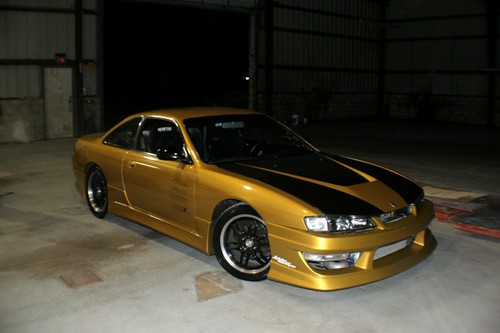
9. **Nissan 240SX**As the successor to Nissan’s 200SX S12 model, the 240SX emerged as a truly sporty vintage Japanese hatchback that carved its own niche in the automotive landscape. It was produced across two distinct generations: the S13, which ran from 1989 to 1994, and the S14, manufactured from 1994 to 1998. Both iterations were powered by a robust 2.4-liter inline-four engine, delivering a responsive and engaging driving experience that enthusiasts still cherish today.
These models have steadily grown in popularity, becoming sought-after collector cars. Their value is anticipated to rise further, largely due to the continuous modification and intensive use of many surviving examples in racing or enthusiast activities, leading to fewer clean, original cars remaining. This scarcity inherently drives up the worth of well-preserved specimens, making them a wise long-term investment.
With clean examples typically fetching prices anywhere from $10,000 to $25,000, the Nissan 240SX stands out as one of the more affordable investment-grade cars on this list. This accessibility makes it an attractive option for retirees looking to enter the classic car market without a prohibitive initial outlay, offering a blend of performance, Japanese reliability, and strong appreciation potential. It represents a practical yet exciting choice for diversifying an automotive portfolio.
The Nissan 240SX offers a compelling package for those who appreciate Japanese Domestic Market (JDM) performance and styling. Its lightweight chassis and balanced dynamics make it a joy to drive, whether for leisurely cruises or more spirited outings. The strong aftermarket support and passionate community further enhance its appeal, ensuring that owners can readily find parts and connect with like-minded individuals.
Car Model Information: 1993 Nissan 240SX Limited Edition
Name: Nissan 240SX
Manufacturer: Nissan
Class: Sports car
Production: 1988–1998
Layout: FR layout
Caption: 1990 Nissan 240SX SE Hatchback (S13) in the USA.
Platform: Nissan S platform
Assembly: Kanda, Fukuoka
Related: Nissan Silvia,Nissan 180SX
Predecessor: Nissan Silvia#S12
ModelYears: 1989-1998
Categories: 1990s cars, All articles needing additional references, All articles to be expanded, All articles with unsourced statements, Articles needing additional references from June 2008
Summary: The Nissan 240SX is a sports compact car that was introduced to the North American market by Nissan in 1988 for the 1989 model year. It replaced the outgoing 200SX (S12) model. Most of the 240SXs were equipped with the 2.4-liter inline-four engine (KA24E from 1989 to 1990 and KA24DE from 1990 to 1998). The KA24E had a single overhead cam and the KA24DE had dual overhead cams. Two distinct generations of the 240SX, the S13 (1989–1994) the S14 (1994-1998) were produced, based on the Nissan S platform.
The 240SX is closely related to other S platform based vehicles, such as the Japanese-market Silvia and 180SX, and the European-market 200SX. Although their names are similar, the 240SX is unrelated to the 240Z or the 280ZX.
The 240SX is known for its popularity within drifting and tuner culture. However, due to the popularity of the S-chassis in drifting and related competitions, prices for vehicles and parts have greatly increased due to higher demand. This problem is sometimes known as “drift tax”.
Get more information about: Nissan 240SX
Buying a high-performing used car >>>
Brand: Nissan Model: 240SX
Price: $14,500 Mileage: 91,086 mi.
Read more about: Beyond the Pavement: An In-Depth Look at 14 Off-Road Trucks, From Trailblazers to Trouble Spots
10. **Porsche 924/944**In the annals of Porsche history, the 924 and 944 models once faced a challenging perception, often dismissed by purists as mere “rebadged Volkswagens” rather than authentic Porsches. This initial skepticism, however, has given way to a dramatic reevaluation of their worth. In recent years, these cars have experienced a significant and consistent increase in value, a trend that mirrors the broader surge in demand for all vintage Porsche models, including previously less conventional offerings like the 914 and 928.
From a purely financial standpoint, the Porsche 924 and 944 are easily some of the best investment cars currently available. Their robust build quality, surprisingly practical nature, and engaging driving dynamics contribute to their growing desirability. As the market continues to recognize their historical significance and engineering prowess, these models are becoming increasingly attractive to collectors who seek both driving pleasure and solid returns.
The desirable years for these models span a considerable period, from 1976 to 1991, offering a wide array of options for prospective buyers. Engine configurations were diverse, including 2.0L, turbocharged 2.0L, 2.5L, turbocharged 2.5L, 2.7L, or 3.0L inline-four units. This variety allows investors to choose based on performance preferences, rarity, and specific model year characteristics that might command higher values.
The shift in perception for the 924 and 944 underscores a broader market trend where overlooked classics are finding their deserved appreciation. For retirees, investing in one of these front-engined Porsches offers a chance to own a piece of Stuttgart’s engineering heritage that delivers both a refined driving experience and a tangible asset with a proven track record of increasing value. It’s a smart move for those who appreciate a blend of luxury and performance.
Read more about: Unearthing Automotive Gold: A Forbes Guide to Classic Cars Becoming Savvy Investments

11. **Renault 5 GT Turbo**The Renault 5 GT Turbo is a truly exhilarating Euro classic, embodying a rich racing heritage as a homologated, street-legal derivative of an iconic Group B rally car. This connection to a legendary era of motorsport not only makes it a ridiculously cool car to own but also an undeniably thrilling machine to drive. Its aggressive stance and performance credentials instantly convey its motorsport pedigree.
What makes the 5 GT Turbo particularly compelling for investors is its current market trajectory. It just might be the fastest-appreciating classic car at the moment that can still be purchased for under six figures. Its value has surged by an impressive 25% over the last year alone, a testament to its growing popularity and the increasing recognition of its unique appeal among collectors. This rapid appreciation signals a robust and active market for this specific model.
Considering its direct Group B lineage and distinctive ultra-widebody aero kit, it’s not hard to see why the Renault 5 GT Turbo has become so popular and sought-after. These features not only contribute to its striking appearance but also hint at the incredible performance capabilities locked within. It’s a car that truly stands out from the crowd, offering a unique blend of historical significance and pure driving excitement.
The desirable years for the Renault 5 GT Turbo are concentrated between 1980 and 1986, a period that captured the essence of its rally-bred design. These models typically featured turbocharged 1.4L or 1.5L inline-four engines, delivering spirited performance characteristic of hot hatchbacks from that era. For retirees with a passion for motorsport history and a keen eye for appreciating assets, the 5 GT Turbo represents an exceptional investment opportunity.
Car Model Information: 2025 Genesis GV80 3.5T
Name: Renault 5
Caption: Second generation R5
Manufacturer: Renault
Production: 1972–1996
Class: Supermini car
Successor: Renault Clio,Renault Twingo
Categories: 1980s cars, 1990s cars, Articles with French-language sources (fr), Articles with Spanish-language sources (es), Articles with short description
Summary: The Renault 5 is a five-passenger, three or five-door, front-engine, front-wheel drive hatchback supermini manufactured and marketed by the French automaker Renault over two generations: 1972–1985 (also called R5) and 1984–1996 (also called Super 5 or Supercinq).
The R5 was marketed in the United States and Canada as Le Car, from 1976 until 1983. Renault marketed a four-door sedan variant, the Renault 7, manufactured from 1974 until 1984 in Spain by Renault’s subsidiary FASA-Renault and exported to select markets.
The Renault 5 became the best-selling car in France from 1972 until 1986, with a total production exceeding 5.5 million over 14 years, making it France’s most popular car.
Get more information about: Renault 5
Buying a high-performing used car >>>
Brand: Renault Model: 5 GT Turbo
Price: $63,683 Mileage: 5,413 mi.
Read more about: Buyer Beware: 12 Cars That Will Cost You a Fortune Before You Hit 50,000 Miles
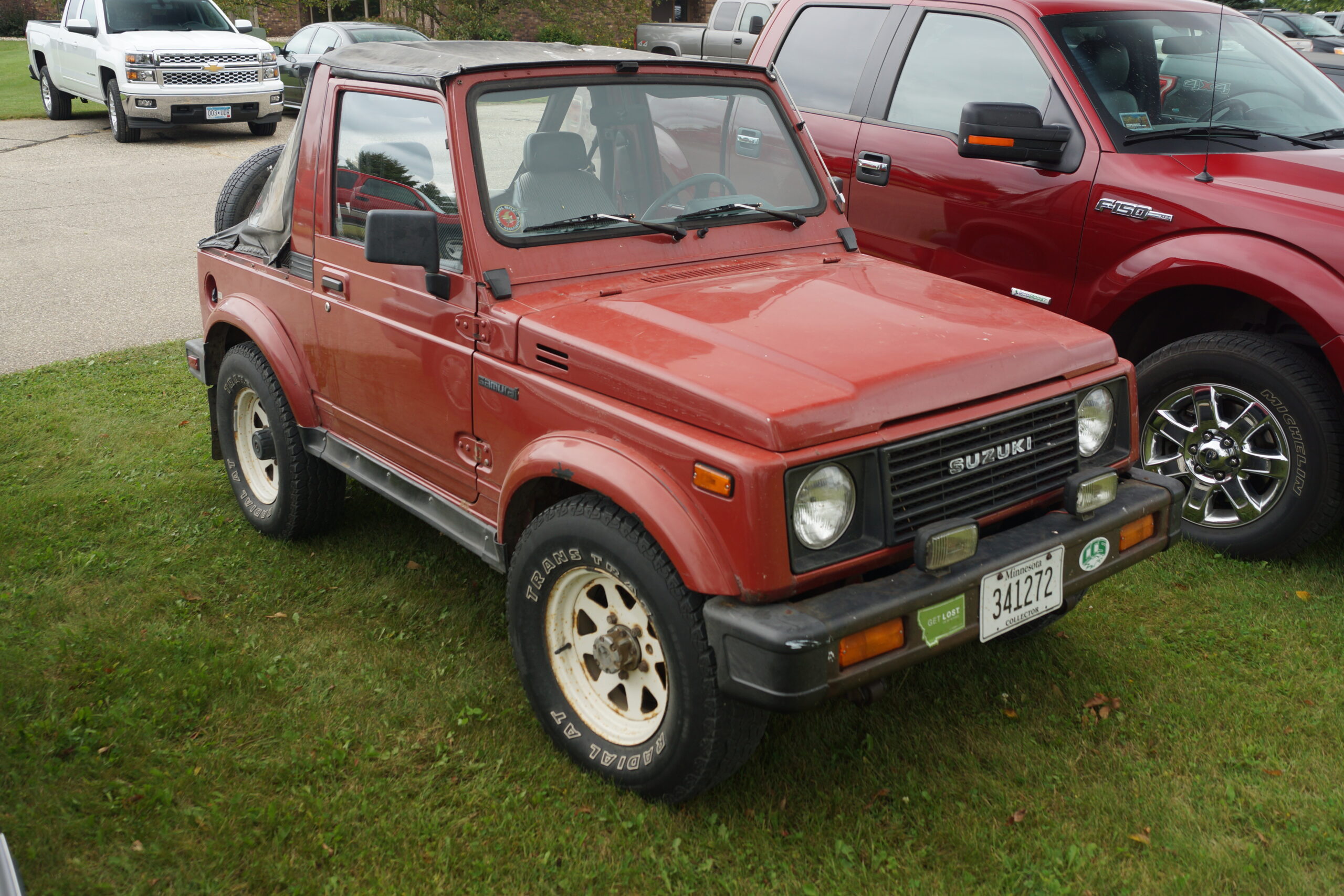
12. **Suzuki Samurai**Initially, the Suzuki Samurai was known as a quirky and notably affordable 4×4 platform, celebrated for its compact size and off-road prowess. Over time, however, this perception has evolved, and it has slowly but surely transitioned into a true collector car. It now boasts a niche, albeit highly dedicated, following that continues to grow, drawn to its unique character, rugged simplicity, and undeniable charm as a vintage off-roader.
The accessibility of the Samurai makes it an appealing option for entry-level classic car investors or those looking to expand their collection without breaking the bank. With an average example typically fetching around $10,000, it isn’t overly difficult to add one of these distinctive vehicles to a collection. This relatively low entry cost, combined with its burgeoning collector status, positions it as an intriguing prospect for future appreciation.
Beyond its investment potential, the Suzuki Samurai offers a hands-on and adventurous ownership experience. Its straightforward mechanicals make it relatively easy to maintain and customize, appealing to retirees who enjoy tinkering or engaging in light off-road adventures. It represents a different kind of classic car, one focused more on utility and character than outright luxury or speed.
The desirable years for the Suzuki Samurai span from 1985 to 1995, during which it was primarily equipped with a dependable 1.3L inline-four engine. This period solidified its reputation as a capable and reliable compact 4×4. For retirees seeking a classic vehicle that offers robust outdoor capabilities, an active community, and a growing collector base, the Suzuki Samurai provides a compelling and affordable option.
Car Model Information: 1988 Suzuki Samurai Base 2dr 4WD SUV w/ Soft Top
Name: Suzuki Jimny
Caption: 2019 Suzuki Jimny SZ5
Manufacturer: Suzuki
Production: April 1970 – present (2.85 million units sold by September 2018)
Class: Off-road vehicle,mini SUV
BodyStyle: SUV,van,convertible,pickup truck
Layout: Front-engine, rear-wheel-drive layout,Front-engine, four-wheel-drive layout
Chassis: Body-on-frame
Related: Maruti Gypsy
Categories: 1980s cars, 1990s cars, 2000s cars, 2010s cars, All Wikipedia articles written in British English
Summary: The Suzuki Jimny (Japanese: スズキ・ジムニー, Suzuki Jimunī) is a series of four-wheel drive off-road mini SUVs, manufactured and marketed by Japanese automaker Suzuki since 1970.
Originally belonging to the kei class, Japan’s light automobile tax/legal class, the company continues to market a kei-compliant version for the Japanese and global markets as the Jimny, as well as versions that exceed kei-class limitations. Suzuki has marketed 2.85 million Jimnys in 194 countries through September 2018.
Get more information about: Suzuki Jimny
Buying a high-performing used car >>>
Brand: Suzuki Model: Samurai
Price: $19,998 Mileage: 85,864 mi.
Read more about: Beyond the Myth: Six Japanese Car Brands Raising Reliability Concerns for 2025 Car Buyers
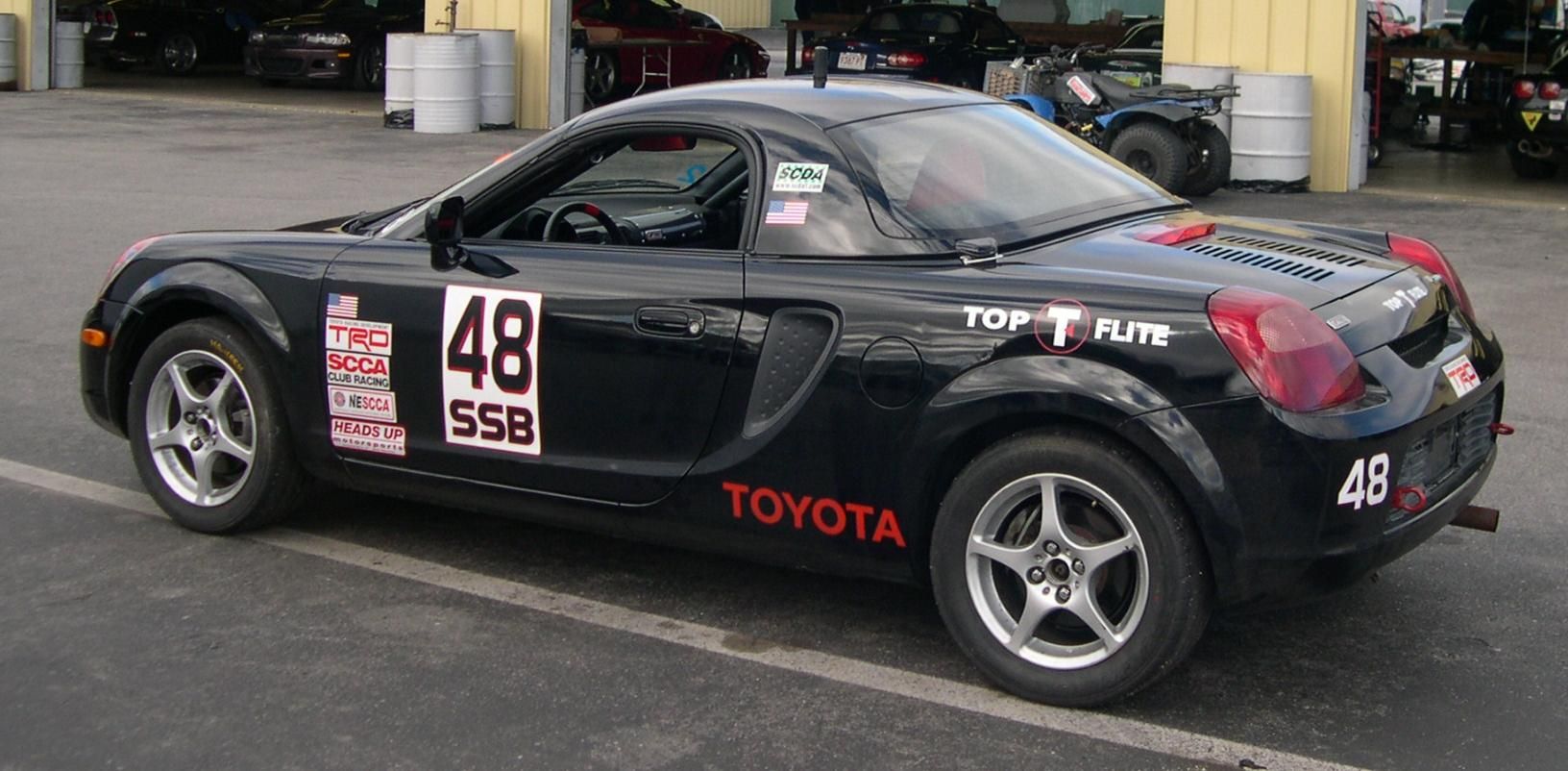
13. **Toyota MR2**The Toyota MR2 stands as an exotic yet surprisingly affordable sports car classic, holding the significant distinction of being Japan’s first-ever rear mid-engined production car. This groundbreaking layout, typically reserved for high-end supercars, provided exceptional balance and handling, making the MR2 a true driver’s machine. It was produced in three distinct generations, with the first two iterations being by far the most desirable from both an investment and collector’s standpoint.
Further enhancing its appeal and historical significance, the MR2 was extensively campaigned in motorsport. Both factory teams and countless privateer drivers across the globe utilized its agile chassis and mid-engine balance to great success in various racing disciplines. This rich competition history adds a layer of prestige and proven performance, making it even more attractive to enthusiasts and investors alike.
The combination of its innovative design, motorsport pedigree, and distinctive driving experience has solidified the Toyota MR2’s position as a modern classic. Its value continues to climb as more collectors recognize its unique place in automotive history and its inherent desirability. For those who appreciate Japanese engineering and a genuinely engaging sports car, the MR2 offers an exciting and tangible asset.
The desirable years for the Toyota MR2 typically span from 1984 to 1999. During this period, engine options included 1.5L, 1.6L, or a supercharged 1.6L inline-four, each contributing to its spirited performance. These diverse powerplants and generational shifts offer retirees various entry points into owning a piece of this iconic Japanese mid-engined sports car, promising both driving enjoyment and potential financial appreciation.
Car Model Information: 2003 Toyota MR2 Spyder
Name: Toyota MR2
Caption: Second generation MR2
Manufacturer: Central Motors
Aka: Toyota MR (France and Belgium)
Production: 1984–2007
Assembly: Sagamihara, Kanagawa
Class: Sports car
Layout: Rear mid-engine, rear-wheel-drive layout
ModelYears: 1985–2007
Categories: 1990s cars, 2000s cars, All Wikipedia articles written in American English, All articles containing potentially dated statements, All articles needing additional references
Summary: The Toyota MR2 is a line of two-seater, mid-engined, rear-wheel-drive sports cars, manufactured in Japan and marketed globally by Toyota from 1984 until 2007 over three generations: W10 (1984–1989), W20 (1989–1999) and W30 (1999–2007). It is Japan’s first rear mid-engined production car.
Conceived as a small, economical and sporty car, the MR2 features a straight-four engine, transversely mounted in front of the rear axle, four-wheel disc brakes, and fully independent coilover suspension – MacPherson struts on each wheel.
The name MR2 stands for either “mid-ship run-about 2-seater” or “mid-engine, rear-wheel-drive, 2-seater”. In French-speaking markets, the vehicle was renamed Toyota MR because the abbreviation “MR2” sounds like the profanity “merdeux” when spoken in French.
Get more information about: Toyota MR2
Buying a high-performing used car >>>
Brand: Toyota Model: MR2
Price: $22,999 Mileage: 6,309 mi.
Read more about: The Road Ahead: Ranking 12 Convertibles Built to Endure 180,000 Kilometers of Open-Air Thrills
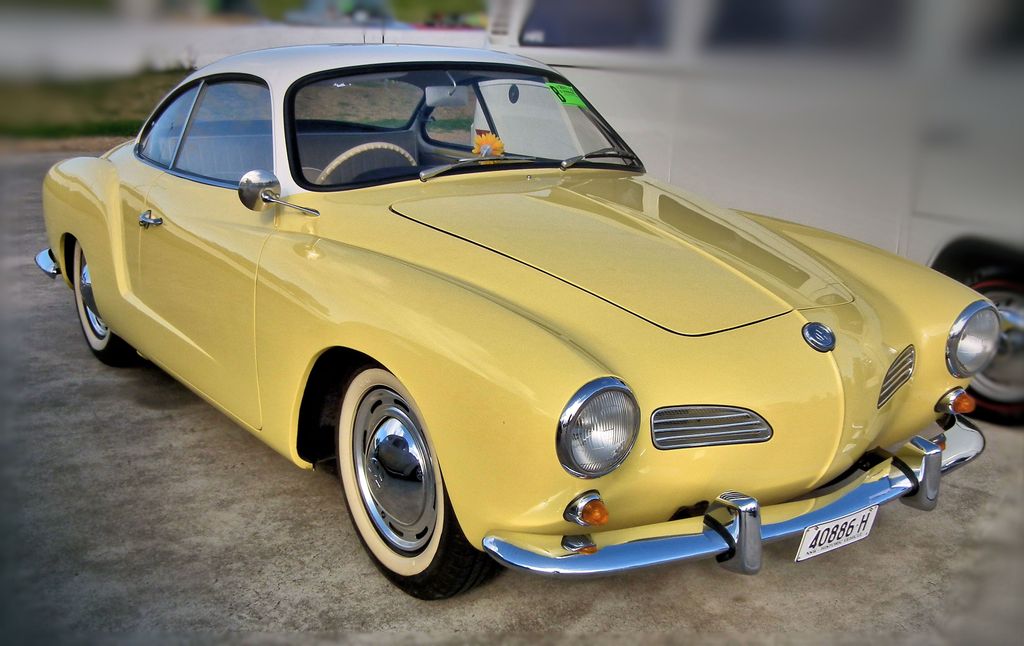
14. **Volkswagen Karmann Ghia**The Volkswagen Karmann Ghia is a truly stunning classic car that masterfully blends elegant Italian design with reliable German engineering, yet can still be purchased for relatively little money. It’s built atop the robust and widely available Type 1 Beetle platform, which benefits from extensive parts availability and a strong support network. The exquisite bodywork, penned by the renowned Italian design firm Carrozzeria Ghia and meticulously built by the German coach-building house Karmann, results in a vehicle of timeless beauty.
This particular investment-grade classic offers a unique advantage for retirees: it can actually be driven on a regular basis without hugely affecting its long-term value, provided it is properly maintained. This contrasts with many other classics where excessive mileage can significantly diminish worth. The Karmann Ghia’s durability and straightforward mechanics make it a practical choice for those who want to enjoy their classic car frequently, rather than just storing it.
The aesthetic appeal of the Karmann Ghia is undeniable, often turning heads with its sleek, flowing lines that belie its humble underpinnings. This blend of beauty and practicality makes it an exceptionally rewarding car to own, appealing to those who desire both style and usability in their classic vehicle. It represents a sophisticated choice that offers both emotional satisfaction and a promising financial outlook.
The desirable years for the Volkswagen Karmann Ghia span from 1955 to 1974, covering a significant production run that saw its design remain largely consistent. It was powered by a range of air-cooled flat-four engines, including 1.2L, 1.3L, 1.5L, or 1.6L variants. These robust engines, combined with its iconic styling, position the Karmann Ghia as a smart and enjoyable investment for retirees seeking a classic with enduring charm and increasing value.
Car Model Information: 2025 Genesis GV80 3.5T
Name: Volkswagen Types 14, 34, and 145
Caption: 1962 Type 14 VW Karmann Ghia
Manufacturer: Volkswagen
Production: Germany,Type 14: 1955–1974,Type 34: 1961/1962–1969,
445,238 total units built:,Coupé: 364,401 (Type 14 and 34),Cabriolet: 80,837 (all Type 14)
Brazil,Type 14: 1962–1971,TC (Touring Coupé): 1972–1975,
41,689 total units built:,Coupé: 23,393,Cabriolet: 177,TC (Touring Coupé): 18,119
Related: Volkswagen Beetle,Volkswagen Type 3,Puma (car manufacturer)#Volkswagen era
Class: Sports car
BodyStyle: convertible (car)
Engine: flat-4
Designer: Carrozzeria Ghia
Layout: RR layout
Successor: Porsche 914,Volkswagen Scirocco,Volkswagen SP2
Assembly: Osnabrück
Categories: 1960s cars, 1970s cars, All articles with unsourced statements, Articles with short description, Articles with unsourced statements from May 2023
Summary: The Volkswagen Karmann Ghia are a family of three overlapping sports car models produced by Volkswagen, marketed in 2+2 coupe (1955–1975) and 2+2 convertible (1957–1975) body styles, though German production ended one year before that in Brazil. Internally designated the Type 14 (1955–1975), the Type 34 (1962–1969), and the Type 145 TC (1972–1975; Brazil), the Karmann Ghia cars combined the floorpans and mechanicals of the Type 1 / Beetle or Type 3 ‘ponton’ models with styling by Italy’s Carrozzeria Ghia, and hand-built bodywork by German coachbuilding house Karmann.
The 1955 Type 14 Karmann Ghia was just the second Volkswagen passenger car ever produced, after the Beetle, and launched six years before the Type 3 notchbacks, fastbacks and Variants (squarebacks). They were faster and more expensive than the Beetle, but very cramped in the back, despite their wider, postwar and nearly slabsided body design. Two years later, in 1957, a convertible was added.
In 1961, the Karmann Ghia briefly lost its title of fastest Volkswagen, upon launch of the more powerful 1500cc Type 3 models, but later that year, Volkswagen, Ghia, and Karmann presented an all new Karmann Ghia – Type 34, using the Type 3’s floorpan and 1500cc powertrain. Made from 1962 to 1969, this had both new, more modern, angular and roomier bodywork; and a new, more luxurious interior, making it substantially more expensive than all other VW passenger cars. Additionally, the Type 34 was one of the world’s first cars with a power operated steel sunroof option. The Type 34 Karmann Ghia thus became VW’s range-topper again – costing up to twice the price of a Beetle – while the cheaper Type 14 remained in production. Only the latter offered a convertible.
Failure to offer the Type 34 in the United States – the Karmann Ghia’s most important market – combined with high pricing elsewhere likely contributed to limited sales, and after the type 14 also received the 1500cc engine in 1967, production of Type 34s was ended during 1969. Volkswagen of Brazil nevertheless looked for an alternative in its market segment, and so Carrozzeria Ghia was again commissioned, to design a third Karmann Ghia model, for the South American market, the Karmann Ghia TC (Touring Coupé), made in Brazil from 1972–1975. The result was a stylish, rakish fastback that offered good interior space for a 2+2 car.
For its final model year, the vestigial rear seat in the Type 14 was discontinued for North American models, as it lacked provisions for seat belts; all Karmann Ghias for 1974 were marketed strictly as two-seaters.
More than 445,000 Karmann Ghias were produced in Germany over the car’s production life, not including the Type 34 variant. Volkswagen do Brasil (Volkswagen Brasil) produced 41,600 Type 34s in Brazil for South America between 1962 and 1975.
Long noted for its exterior styling, the Karmann Ghia was designed with input from numerous individuals at Carrozzeria Ghia and was strongly influenced by Virgil Exner’s work, though all of its designers passed without a definitive individual styling attribution.
Get more information about: Volkswagen Karmann Ghia
Buying a high-performing used car >>>
Brand: Volkswagen Model: Karmann Ghia
Price: $63,683 Mileage: 5,413 mi.
Read more about: Revving Up Your Portfolio: 14 Once-Overlooked Vintage Cars Poised for Explosive Investment Growth
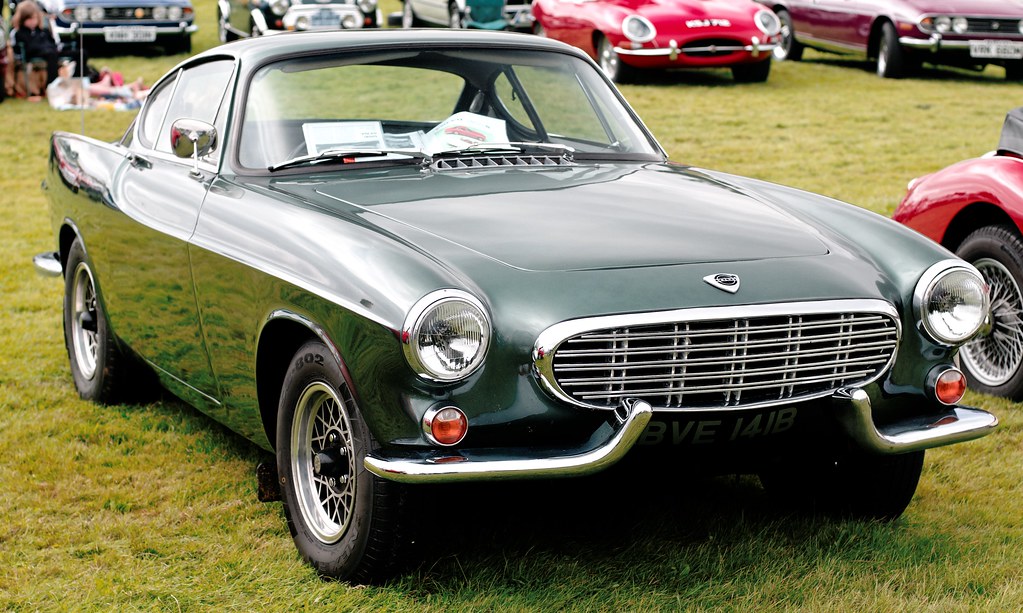
15. **Volvo 1800S**The Volvo 1800S is an objective automotive classic, celebrated for its sleek midcentury design that has managed to wonderfully stand the test of time. Its elegant lines and sporty coupe silhouette exude a sophisticated charm that continues to captivate enthusiasts decades after its production. This car is a testament to Volvo’s often-understated design capabilities, proving they could produce vehicles that were not only safe but also strikingly beautiful.
While clean, original, or professionally restored examples of the Volvo 1800S typically command prices ranging anywhere from $20,000 to $60,000, there remains a compelling opportunity for the astute investor. If you know where to look, neglected specimens can still be picked up for only a few thousand dollars. This creates a very profitable investment opportunity for those willing to undertake a restoration, allowing them to potentially realize substantial returns as they bring a forgotten gem back to its former glory.
Beyond its investment potential, the 1800S is undoubtedly one of the coolest and most interesting cars that Volvo has ever produced. Its distinct character and connection to popular culture, notably through its starring role in the TV series ‘The Saint,’ add to its allure. Owning an 1800S is not just about having a classic car; it’s about possessing a piece of automotive and cultural history that offers a unique driving experience.
The desirable years for the Volvo 1800S span from 1961 to 1973, encompassing the period where its iconic status was firmly established. These models were typically powered by reliable 1.8L or 2.0L inline-four engines, known for their durability and smooth performance. For retirees who appreciate timeless design, a rich heritage, and the potential for significant appreciation through restoration, the Volvo 1800S offers a truly rewarding investment.
Car Model Information: 2024 Volvo XC90 Recharge Plug-In Hybrid Ultimate
Name: Volvo P1800
Caption: 1965 Volvo 1800S
Designer: Pelle Petterson
Manufacturer: Volvo Cars
Assembly: West Bromwich,Torslanda,Gothenburg,Arica
Production: 1961–1973,coupé: 39,407,sports estate: 8,077
Layout: Front-engine, rear-wheel-drive layout
Transmission: Volvo M40 transmission,Overdrive_(mechanics)#In_Europe,Borg-Warner 35 transmission
Length: convert
Width: 1700 mm
Abbr: on
Height: convert
Weight: convert
Wheelbase: 2450 mm
Related: Volvo Amazon
Engine: Volvo B18 engine#B18,Volvo B18 engine#B20
Class: Sports car
BodyStyle: coupe,shooting brake
Predecessor: Volvo P1900
Categories: 1970s cars, All articles needing additional references, All articles with dead external links, All articles with unsourced statements, Articles needing additional references from March 2018
Summary: The Volvo P1800 (pronounced eighteen-hundred) is a 2+2, front-engine, rear-drive sports car manufactured and marketed by Volvo Cars between 1961 and 1973. Originally a coupé (1961–1972), it was also offered in a shooting brake configuration toward the end of its production (1972–1973). Styling was by Pelle Petterson under the tutelage of Pietro Frua when Frua’s studio was a subsidiary of the Italian carrozzeria Ghia, and the mechanicals were derived from Volvo’s Amazon/122 series.
Marketed as a touring car rather than a sports car, the P1800 became widely known when driven by British actor Roger Moore in the television series The Saint, which aired from 1962 to 1969.
In 1998, an 1800S owned by Irv Gordon (1940–2018) was certified as the highest mileage private vehicle driven by the original owner in non-commercial service—having exceeded 3.25 million miles (over 5.23 million km) as of his death in 2018.
Get more information about: Volvo P1800
Buying a high-performing used car >>>
Brand: Volvo Model: 1800S
Price: $62,997 Mileage: 11,747 mi.
Read more about: Beyond the Quarter-Million Mark: Our Shortlist of Cars Engineered for Extreme Longevity
The journey into classic car ownership for retirees offers far more than just a financial investment; it’s an embrace of passion, history, and a unique lifestyle. From the nimble agility of a Lotus Elise to the rugged charm of an International Harvester Scout, each vehicle presents an opportunity to connect with a legacy of engineering and design. Whether you’re drawn to the thrill of a performance machine or the elegance of a timeless cruiser, the market for investment-grade classics is ripe with possibilities. By understanding the nuances of each model and approaching the purchase with informed enthusiasm, retirees can successfully navigate this exciting landscape, ensuring their golden years are filled with the joy of ownership and the satisfaction of a shrewd investment. These automotive treasures truly offer a rewarding blend of appreciation, community, and unparalleled driving pleasure.


